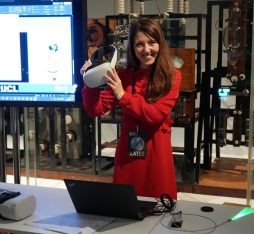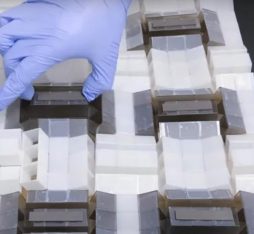Thing in the future, un graphe d’objets qui recense 51 millions d’avatars et 44 millions de relations, architecturé et outillé pour assurer le passage à l’échelle.
Introducing Thing in the future: Orange Research upgrades its Web of Things platform
Simply put, Thing in the future is a graph of things which, like a social network providing similar functionality for people, is composed of physical things and entities, the nodes, and logs the relationships between them. It’s a multi-interface platform which IoT app developers can connect to and interact with at its front end, and data providers can do so at its back end. The Research Fair offers an in-depth look at Thing in the future via three key immersive demos: the core of the platform, usage studies, and security.
The “core”, facilitating injection and scalability
By the end of 2017, some time after its creation, Thing in the future encompassed more than 500,000 devices and 50,000 relationships. The introduction of avatars (digital representations of things) continued steadily throughout 2018, to the point that it now has 51 million devices and 44 million relationships. Indexation of devices with their semantic description is the core of the platform, and it has been designed and equipped to support this expansion and ensure its scalability. “A wide range of recognition and ingestion strategies have been proposed, via the use of API or scanning methods, whereby things can be entered singly or using a shotgun approach”, explains Cédric Seureau, Responsible for the demo “Introducing Thing in the future”. “In both cases, users from partner ecosystems can enter their thing(s) themselves and manage the associated access rights autonomously.”
The platform’s capabilities are then upgraded initially using the first usage cases developed with partners, some of which are showcased at the Fair.
Services that gravitate around the graph
One of these demonstrations of use cases is connected with the collaborative TangoB project supported by ADEME (the French Environment and Energy Management Agency) for the reuse of corporate property and equipment, with contributions from partners such as Orange, EDF and Enedis. Although corporate and governmental reuse of things remains only marginal, the Thing In The Future graph makes it possible for them to inventory their furniture. Services can then be developed to view and query that database for simple management purposes – real-time inventory, sharing, lending, etc.
This is only one example of the many potential applications connected with this platform, which also offers management enablers, visualisation and intelligence for developer communities to create end-to-end services themselves.
A Web of Things that is inherently secure
The prerequisite for a relevant, productive and trouble-free exploitation of Thing in the future naturally concerns security, in order to create a trusted Internet of Things. Two demonstrations illustrate this strategy at the core of the Platform: Security By Design and Security By Operation. “This consists partly of giving owners the right to manage the beneficiaries of their things, in particular for their sharing, to the finest degree”, says Cédric Seureau. “And partly, to detect potential vulnerabilities and attacks against connected objects and giving the option to restrict access by introducing appropriate dynamic security strategies.
This will ensure to protect the IoT park thanks, for example, to the assignment of a confidence score in the object, accessible via Thing’in”.
Thing in the future augments the IoT world
The “Introducing Thing in the future” demo is an ideal introduction to the platform, and offers an in-depth, immersive look at the Web of Things and its ecosystems. “Our goal now is to boost the momentum that has been generated around the platform in recent months. We now have partners, we have made great progress in our thinking and understanding by listening to their requirements and challenges. We now want to show usage cases that we have developed together and feature them in our ecosystems, including our external ecosystems; in short, to highlight and promote the potential of Thing in the future and its complementarity with other Orange IoT platforms such as Live Objects.” This is the whole point of this augmented reality demo, which shows how visitors can – via a tablet or 3D mock-up – project themselves into the 3 usage scenarios set up by the platform: at home, in a connected greenhouse, and in a smart city.
The Web of Things is the thing of the future!
Read also on Hello Future










